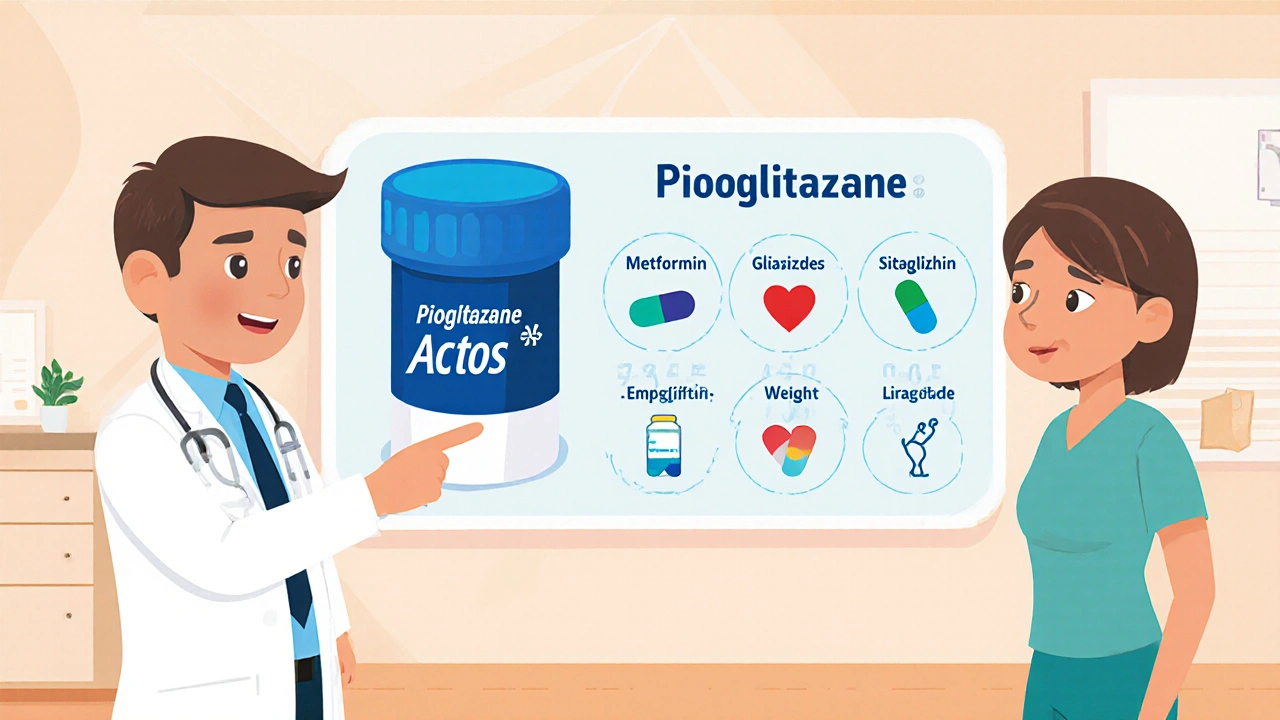Pioglitazone: What It Is, How It Works, and What Alternatives Exist
When you’re managing Pioglitazone, a thiazolidinedione medication used to lower blood sugar in people with type 2 diabetes by making the body more responsive to insulin. Also known as Actos, it’s not a quick fix—it’s a long-term tool that works behind the scenes to help your cells absorb glucose more efficiently. Unlike insulin shots or drugs that force your pancreas to pump out more insulin, Pioglitazone changes how your body reacts to the insulin you already make. That’s why it’s often used when metformin isn’t enough, or when someone can’t tolerate its side effects like stomach upset or diarrhea.
This drug doesn’t work for everyone, and it’s not for type 1 diabetes or diabetic ketoacidosis. People with heart failure, liver problems, or a history of bladder cancer are usually told to avoid it. It can cause weight gain, fluid retention, and in rare cases, bone fractures—especially in women. That’s why doctors often check liver enzymes before starting it and monitor for swelling or sudden weight increases after. It’s also not the first choice anymore. Newer drugs like SGLT2 inhibitors and GLP-1 agonists have taken over as preferred options because they offer heart and kidney benefits beyond just lowering sugar.
But Pioglitazone still has a place. For some, it’s the most affordable option. For others, it’s the only one that keeps their A1C steady without causing low blood sugar. It’s often paired with metformin, sulfonylureas, or even insulin when needed. If you’re on it and wondering if there’s something better, you’re not alone. Many people switch to drugs like empagliflozin or liraglutide because they lose weight instead of gaining it, or because they reduce the risk of heart attacks. But switching isn’t simple—it takes time, testing, and a good doctor to guide you.
Below, you’ll find real comparisons between Pioglitazone and other diabetes treatments, stories from people who’ve tried it, and clear breakdowns of what to expect if you’re considering it—or already taking it. You’ll see how it stacks up against metformin, glimepiride, and newer agents. You’ll learn about the risks, the benefits, and the quiet truths most websites don’t mention. This isn’t theory. It’s what people actually experience when they use this drug—and what to do next if it’s not working for you.

Pioglitazone (Actos) vs Top Alternatives: A Clear Comparison
A detailed side‑by‑side comparison of Pioglitazone (Actos) with top diabetes drug alternatives, covering efficacy, safety, cost and when each option makes sense.
October 21 2025